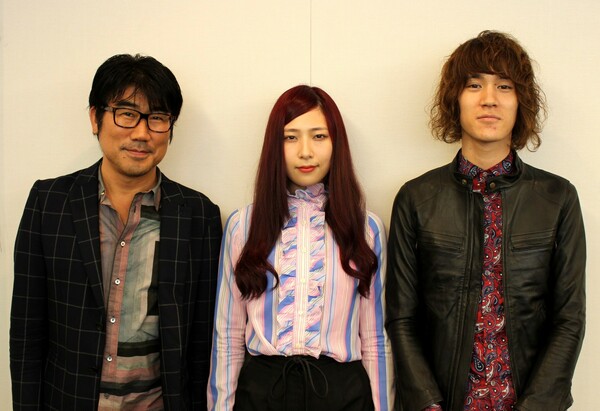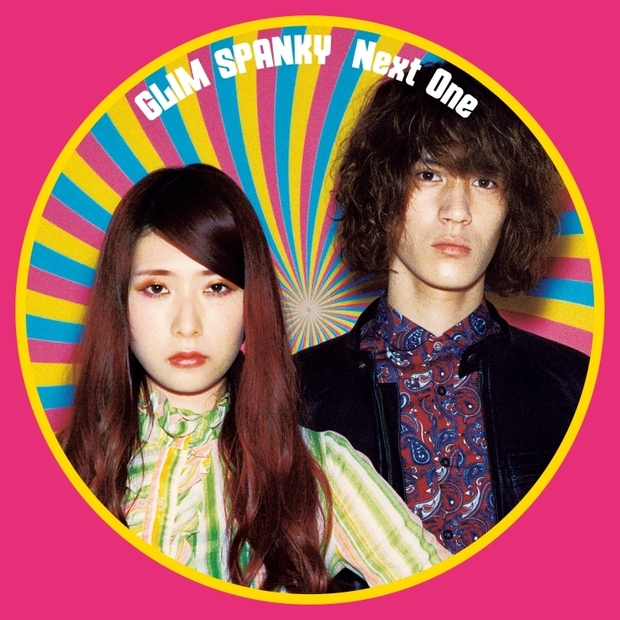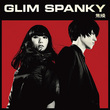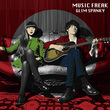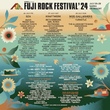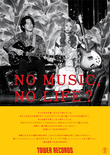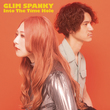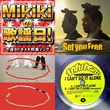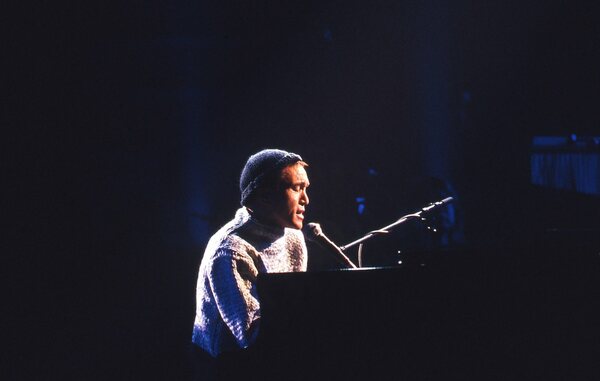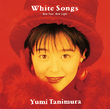Face-to-face talks between GLIM SPANKY and Seiji Kameda reveals untold stories on the production, along with their true thoughts toward the latest album, “Next One”
The mutual respect for each other unveiled to the fullest
Interviewed and written by: Tetsuo Yamaguchi
GLIM SPANKY - the Japanese rock duo formed by vocalist Remi Matsuo and guitarist Hiroki Kamemoto - has just celebrated 2 years of their career under a major label, and on the sidelines of their ever spanning musical engagements, they have now released their latest album, “Next One”. The album contains a number of tie-up songs with top shows and projects, one of them namely being the main theme song for the film [ONE PIECE FILM GOLD] - “Ikari wo Kureyo (meaning Give Me Rage)” - that came to fruition following a direct and eager request from the author of the manga [ONE PIECE], Eiichiro Oda himself… - as if the music by the duo needs to be further proved of the wide-ranged support and love shown to it. Albeit working for the various requests, the duo has kept firmly unswayed at all times the core of their own music based on the rock sounds from the 60s to the 70s, and this time have come up with this album “Next One” - a collection of tracks polished with further sophistication and a one that lives up perfectly to its title that allows them to take the ‘next’ step.
To commemorate the release of their newest piece of work, Mikiki has boldly brought together the 2 members of GLIM SPANKY and Seiji Kameda, the producer/composer (and former member of Sheena Ringo-led Tokyo Incidents [Tokyo Jihen]) who has been producing GLIM SPANKY’s songs as occasion serves. The three had shared stages at live shows and the duo had also appeared on Kameda’s radio show in the past, but surprisingly, this was actually the first time for them to go knee-to-knee in a face-to-face talk session. The talks nicely uncovers a wide spectrum from topics, ranging from their first impressions of each other to untold episodes of the production of the song “Ikari wo Kureyo” produced by Kameda. Be prepared to learn the true definition of ‘mutual affection’! Read on to find out more about the smiles and laughter-filled interview abound with the mutual respect toward each other.
"Oh what a joy to be alive until this day!!" – that’s how much of an impact the encounter with GLIM SPANKY was (Kameda)
――When did GLIM SPANKY meet with Kameda-san for the first time?
Kamemoto (GLIM SPANKY guitarist): Actually, a pretty long time ago.
Matsuo (GLIM SPANKY singer/guitarist): Back in 2012 I think.
Seiji Kameda: There’s this website called [Kameda Daigaku (Kameda College)] in which I have a segment that introduces talented amateurs. It’s called [Kameda Daigaku Circle] and to that, these two sent in their work to get introduced.
Kamemoto: It was actually through the grapevine. We heard from someone that there’s this chance to have Kameda-san listen to our music, so we gave our material to that person to have it handed to Kameda-san.
Kameda: And the moment I listened to it, I fell in love with it right away. Like, “you have to just come and join the club!!” After that, there was this live show called [Kogame Matsuri] at Shibuya BOXX, and I had them play and they were just so perfect. So I was thinking, I’m darn sure these kids are going to see the light with or without my involvement, but then guess what, someone brings it (production request) to me! What else should we call this other than fate?
Matsuo: Can’t agree more.
――What was the track you first handed to Kameda-san?
Matsuo: Was it “Dummy Rock & Blues” (recorded in the mini-album “MUSIC FREAK”)?“
Kamemoto: "MIDNIGHT CIRCUS" (coupling song for the 2014 single release “Shoso (meaning Impatience)”
Matsuo: More the rock’n’roll type songs. Like the classic standard-ish rock tunes.
Kameda: There was no one else doing what you were out of the hundreds of demo tapes that reached me. Yeah, they might have had some originality here and there, but there weren’t any young artists that were trying to paint their own colours on authentic traditional styles.
――So you’re saying they already had this eye-catcher appeal even back then.
Kameda: Yes. The GLIM SPANKY you see today was already in shape there. And there was this vibe that made me feel their firm determination – that they were absolutely prepared to play their own music. It was a joy for me to be able to make music with artists like them, and it just gave me this sense of purpose - of being alive. It was only because I had the experience and kept myself involved in music myself, that I was able to luck out in the musicians’ department. “Oh what a joy to be alive” –that’s how much of an impact the encounter with them was.
Matsuo: We are so grateful.
――What was the impression when you met with Kameda-san for the first time?
Matsuo: It was not until the [Kogame Matsuri] that we actually got to meet-and-greet each other. My image of him was basically from his Tokyo Incidents days, so I was dreading that he might be the hairy type of people.
Kameda: Ha ha ha!
Matsuo: But if you meet him in person, you’d realize how much a person of depth he is. What a relief that was (laughs). When he was introducing the performers on stage to the audience after the show, he described our music as ‘high road classic rock with a hint of the 60s and the 70s, bound to make you sway by your hips’. But when we had a conversation later on at the after-party, he kindly explained to us, ‘I did say that you’re music is rock of the 60s to 70s, but please do know, I know fully the originality that lies in your music.'

Kameda: Yeah, I remember that. I think I was giving you the nudge to ‘keep doing your own thing!'
Matsuo: That’s right. He was telling us to act up to what we believe in – to not give in. That was a real something.
――Out of the songs already released, the song “Homeroyo (meaning Praise Me)” is produced by Kameda-san. Was that the first time you worked together?
Kamemoto: No, it was “Otona ni Nattara (meaning When I’m Grown Up)” (in album “SUNRISE JOURNEY” released 2015). It was right after we recorded “Shoso” (the single released in 2014)“, the spring of 2014, perhaps. Our director told us how much he liked the track, and asked us whether we’d like to work with Kameda-san.
――What about you, Kameda-san, about actually working with the pair?
Kameda: Both Remi (Matsuo) and Kame-chan (Kamemoto) clearly express what they have in mind in their sounds, as well as in conversations. Given that, I decided to keep myself in the role of something like the mirror that simply reflect those intentions. It’s like being the guiding figure that enables them to proceed with the confidence of ‘doing the right thing.’ On the other hand, we are, by definition, producer-musician and I am also old enough to be their parent, but we are collaborators in the end since we’re working on it together, so I take the stance of being a member of the same band. Oh, and luckily, GLIM SPANKY doesn’t have a fixed bassist, so I get to play for them! I simply love playing ensemble – I just keep on telling them.
Kamemoto: Yes, you do (laughs).
Kameda: Also, every single piece of work with GLIM SPANKY is so creative. The duo always come up with a track filled to the brim with their intentions, motivations as musicians and good heart, and the process of expanding those is extremely creative. I think every single person involved – like myself, the drummer, the engineer Toshimi Nanseki, Junji (Ishiwatari ); simply everybody – is there with the genuine aspiration to make GLIM’s music sound better. But of course, that is all because the two are people of virtue. You can easily tell how they care about music, and how constructive they are with their performances, so it never comes to a conflict like ‘that's not really it.’
Matsuo: That’s right. We do the recording like all of us is taking the step forward together.
Kameda: The teamwork there is fantastic. But I think that’s all because GLIM SPANKY knows so clearly what kind of music they want to play.
Kamemoto: That, precisely, is something I strongly focus on. It wouldn’t be any good if we ourselves didn’t have a vision of what/how we want to things to be done, and it’s something we shouldn’t be relying on anyone else.
Matsuo: It would be disrespectful to ask others for certain things when we weren’t really clear with the vision ourselves. If we were to sway easily, the people working for us will have a hard time figuring out what to do. We are committed to making songs that would live for decades to follow, so it’s really not something you can do with a half-hearted attitude.
Kameda: Because they have this truly firm intention, I get to deal with these fast and heavy balls from them like bullets and cannonballs.
Working like he’s one of us in the band (Matsuo)
――Even from what you’re just saying, we can tell that the atmosphere at the production front is great.
Matsuo: I think we owe that to Kameda-san’s power. Ask anyone in the business –any musician, any director- and you won’t hear a single thing negative about Kameda-san (laughs). I truly think that there’s not a single person on this planet not in favor of Kameda-san.
Kameda: Ha ha ha, I’m not sure about that (laughs).
Matsuo: I mean, that’s just what he is. Even if you felt some kind of anxiety or were worried about something, a soft shove in the back by Kameda-san will change it into a can-do spirit, just like that. For rendition and sounds, needless to say, but Kameda-san’s presence is such that has great influence also on the atmosphere.
Kamemoto: The mini-album we released this year (“To the Wild Side”) was produced entirely by ourselves, apart from the title track. And naturally, we got to learn how efficient Kameda-san’s handlings are - how they free us from stress and unnecessary thoughts.
Kameda: After all, music is the result of the ‘vibes’ injected. Look at it this way – music is made of vibration of air, right? So whether the outcome turns out to be a piece that would be cherished for 10 years or 20 years all depends on how much vibration of emotions you can capture in the form of sounds. I want them to drive themselves in the way they feel comfortable, without any unnecessary detours. And if they come within an ace of a detour, I’m the one to navigate them back saying, ‘it’s okay as it is, you’re doing just fine’.
Matsuo: That’s true. He is navigating us toward a good direction. Before, I never used to have a good image with these people in ‘Producer’ hats. I used to think that they were the ones who fiddle around with the tracks and change the sounds to something completely different from the original, and in the end proceed to releasing it without us knowing.
Kameda: Ha ha ha (laughs)!!
Matsuo: But then those were diminished through our experience of working with Junji Ishiwatari (former SUPERCAR guitarist and music producer) before having Kameda-san produce our songs, and also seeing the way Kameda-san does his stuff, I became convinced that producers are there to bring out the best of what we have. I got to feel safe and sound, and now every time we work with Kameda-san, I’m working with him as if he’s one of us in the band.
Kameda: And when we do the actual recording, our cue is like ‘one, two aaaaaand, three!’. Not like me leaning back with my feet up on the console behind the glass wall, going ‘do that again, okay, take two!' (laugh). It’s more like I’m the one begging ‘can we do that again?!’ like a child.
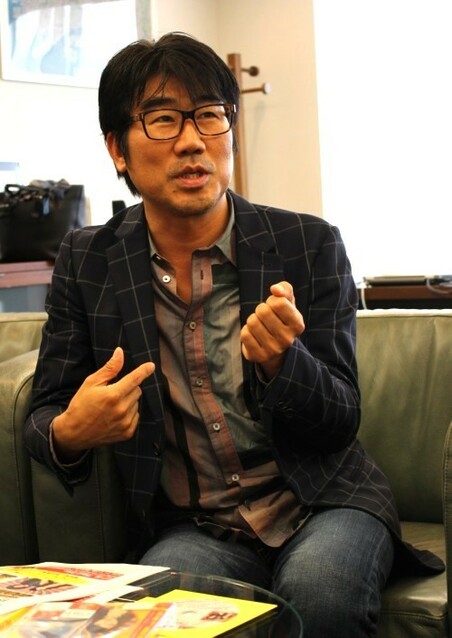
Matsuo: Ha ha- (laughs). It is really special for us to be able to play music with Kameda-san, sharing the same mentality as if we all come from the same generation. Also, we are genuinely stunned by Kameda-san’s bass.
Kameda: Thank you.
Matsuo: I know this is just me, but I love The Beatles, and so does Kameda-san. And to me, Kameda-san’s bass is like the whole of The Beatles itself, rather than simply being ‘Paul’. From forming the band all the way until the breakup, the four made a vast variety of songs, ranging from popular sounds to bluesy tunes, or to psychedelic numbers, and that vastness of musicality is exactly what I feel in Kameda-san’s bass.
Kamemoto: He has this thing with these incredible phrases that he would come up with ever so casually on the day of the recording, that you’d think you can even make a great riff out of.
Kameda: Well, thank you. I too love Remi-chan’s singing and Kame-chan’s guitar. We have this mutual respect going. It’s something that goes beyond age or past careers – a respect to each other as musicians.
――Wow, that’s a great amount of devotion for each other there.
Matsuo: Ha ha (laughs). Well, you can't team up with someone you don’t really like.
Kameda: But actually, that’s pretty important. In the end, it’s best that the person who likes the music, pours their heart into it. I take on the producing job of GLIM SPANKY because I like their music. Performing or producing music just for the sake of the money or business ties just doesn’t work for me.
――That’s really something. Now, on your new album “Next One”, you have “To The Wild Side” and “Ikari wo Kureyo”, both produced by Kameda-san, out of which “Ikari wo Kureyo” has been chosen as the main theme song for the film [ONE PIECE FILM GOLD]. Were there any specific requests from the film production side in terms of how the song should be?
Matsuo: We did hear their intentions of wanting something different from the image of [ONE PIECE] until then. Also, they asked us to make something with the feel of ‘battling Luffy (main character of the series)’. Rather than casually using the song on wherever the film as the ‘main theme’, they wanted to use the song in the manner that would evoke the picture [ONE PIECE vs GLIM SPANKY]. Given that, we needed to achieve something that builds on a spread of rock sounds that we are known for, but still takes on the catchiness that is likeable throughout the household and still has the sharp tongue. So yes, we wrote the song with those in mind, but boy, that was pretty hard.
Kameda: Because we all had the respect to [ONE PIECE], even if we were asked to make something of a different image from the past, we couldn’t help expressing our respect by sounds, inserted here and there.
Matsuo: Yes, yes. Absolutely.
Kameda: But I guess that was precisely what Oda-san (writer of ONE PIECE) wanted us to make a distance from. What we were doing only meaning well, ended up striking at the air.
Matsuo: We had two meetings with the film production team, and at the first, we were asked to make a song in the image that GLIM SPANKY has for [ONE PIECE].
Kamemoto: And because we were fans of [ONE PIECE], the track we came up with already had this certain must-be-this image. We felt confident of the track and brought it in to Kameda-san and polished it up, but then…
Matsuo: They told us, ‘sorry, this isn’t what we meant.’ So we had another meeting with them and were asked to ‘make it rock like you don’t care’, and more ‘unrefined’.
Kamemoto: ‘Something Iggy Pop-ish, perhaps?’, we were told (laugh). So we made the song from zero, completely taking out those bits of ‘respect’ we had inserted in the previous piece. And that’s how we came about with “Ikari wo Kureyo”.
Kameda: But I think the love from Oda-san to GLIM SPANKY made the song fantastic, even more so.
――We hear that Mr. Oda specifically named you.
Kameda: Yes, and that is significant. Oda-san is known to have been a fan of GLIM’s music, and the two already knew what would be desired of them should the request come to them. And to accommodate that, all they needed to do was to change the trump card – to tune in to their other channel. So the first attempt and the second may sound like they’re taking a completely different direction, but it wasn’t like they had to change course in despair.
Kamemoto: True.
Matsuo: Everyone was facing forward. We had a hard time finalizing the lyrics, but then this e-mail from Oda-san arrived, saying ‘I do like these words.’ They were the words I wrote in a jiffy when we were recording the vocals for the demo at Kameda-san’s studio.
――Which line would that be?
Matsuo: It’s where it goes [Shiren nando koeyoga/Manzoku wo keritobashite ikoze (translation No matter how many times you overcome the challenges/Kick satisfaction out of the way and just keep going)]. It was a line that I too had wanted to sing, and I was exchanging talks with (Junji) Ishiwatari-san on that line until the very last minute in order to make it a product of ‘co-work between Ishiwatari-san and myself’, but I guess mentally, I was connected with Oda-san. It was a really exhilarating piece of tie-up work.
Keeping things in a passable moderate manner isn’t our nature (Kamemoto)
――From the album overall, we get the impression that you have furthered your pursue for ‘music that is authentic, yet original’ that Kameda-san mentioned before. It surely proves to be a piece of work that is the ‘NEXT ONE’, but were there any specific images of the album you had in mind?
Kamemoto: Kamemoto: It wasn’t like we had a fixed concept like ‘let’s make it an album like this’. It’s more a result of writing songs we wanted to at the time or making tunes we were expected to make, which then counted 10 songs by the time we knew it. It all came naturally.
Matsuo: Even for tie-up songs, we are only singing what we wanted to.
Kameda: That’s something to be proud about.
――You have a variety of tones with the songs. Some are energetic like “Ikari wo Kureyo”, and others may be tunes of dreamy quality with heavy moods like in “Yami ni Me wo Koraseba”. The tone really goes from one extreme to another.
Matsuo: Intermediate’ isn’t on our dictionary.
Kamemoto: Keeping things in a passable moderate manner just isn’t our nature.
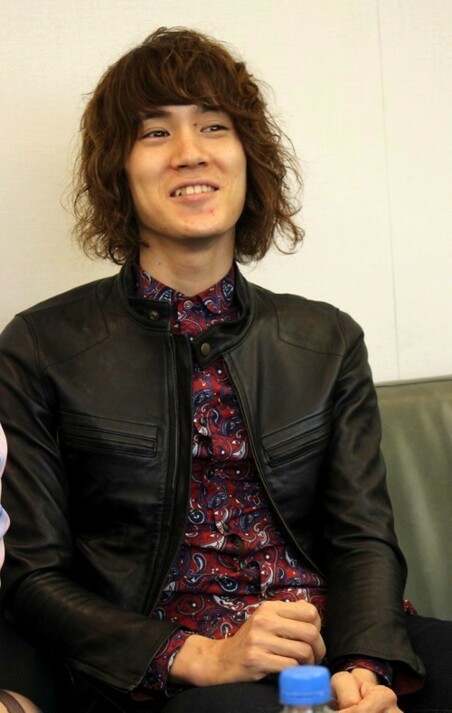
Matsuo: And that applies to when we are making songs or choosing sounds. Even for selecting members to record with, we’re not keen with simply going ‘oh, it should work with him/her.’ We only want to work with people we really like or want to work with (laugh). And with that, we are happy that are work has come out as a piece of absolutely no compromise nor regret. Our aspirations are already travelling to the ‘NEXT ONE’ – to the third album.
Kameda: I like that. That kind of determination and the dislike for half-heartedness clearly shows in your sounds. Remi-chan having awesome vocal skills and Kame-chan’s excellency in guitar techniques contributes largely to that. There aren’t many people who show that level of determination, but can actually bring themselves up to the same level.
――So you’re saying that they have the ability to embody their determination?
Kameda: That’s right. So it’s really a mystery to me, how they obtained the skill to do so. I mean, yes, it is true, in the world we live in now you can absorb any kind of information, but Kame-chan, you’re only 25, right? When I was your age, I was still a fluffy baby chick!
Matsuo・Kamemoto: Cheep, cheep. Peep, peep (laughs).
Kameda: That’s around the age I was about to start my life as a professional. Oh, this is something I needed to tell you, but these two, no matter how much originality they have and are doing only what they desire to, they never have a bad word to say about music of others.
Kamemoto: (troubled smile)
Kameda: Oh what , you do?
Matsuo: Well, of course we do have (musical) preferences. I mean, we are music fans and music listeners too. Like, we did throw in some shred guitar in “Ikari wo Kureyo”, but personally, I’m not really a great fan of the 80s’ hard rock-ish guitar. But as Remi Matsuo, the half of GLIM SPANKY, I know it’s something that will help let people know what we are about, so I’m good with it.
Kamemoto: So, like you’re taking an objective perspective too, right? Like, “let’s see what Remi of GLIM has to say?”
Matsuo: I would say so.
Kamemoto: But that also might be the influence from Kameda-san.
Kameda: That I would go saying “let’s see what Kameda has to say”??
Kamemoto: No, not that (laughs)! But actually, when I writing with Remi, she would often say “hey, that’s SO not cool!”, whereas with Kameda-san, she would never say such thing.
Matsuo: There’s nothing to worry about with Kameda-san. I think those comments of being ‘not cool’ comes from being anxious.
Kameda: Right. So, I guess that comes from my saying ‘it’s alright because your GLIM-liness remains intact’, seeing things from a long shot view.
Matsuo: That’s right.
Kameda: But there are times you state your opinion to me.
Matsuo: True. Things like ‘Can we change the bass line here?” If there’s something that’s bugging me, I will speak out. Because, it’s our music we’re working on… But it’s a very rare instance with Kameda-san. So when I do say it, it comes like the finishing blow – ‘this is going to what represents GLIM you know?
Kameda: That’s something I’m always prepared for. I work with the inclination to function as a huge amplifier to deliver their sounds loudly, always maintaining the characteristics they are known for.
Matsuo: For instance, if there was a song I really wanted to unfold my own world view, I first get rid of every single element I don’t like. I am okay with this kind of extremely narrow-minded works. But when I’m working with Kameda-san, I want to do it with a heart as big as the ocean. We really want to have people get to know GLIM SPANKY, and it’s not enough that it only gets to people who understand.
――So, it’s about time now. I guess we can look forward to great music from this brilliant tag team going forward, right?
Matsuo・Kamemoto: Absolutely.
Kameda: Yes, I'm looking forward too. Every time I work with them, I feel like I’ve developed myself too. Remember how Remi-chan referred to The Beatles when she described my bass? I get to reconfirm where I stand as a musician through comments like that, and by working together, there are times I realize the ‘unopened drawers’ I still have. I am truly grateful and happy to be able to stand in a place where I can enjoy both the inspiration one would usually gain from long-time classics, and the new inspirations from younger generations.

